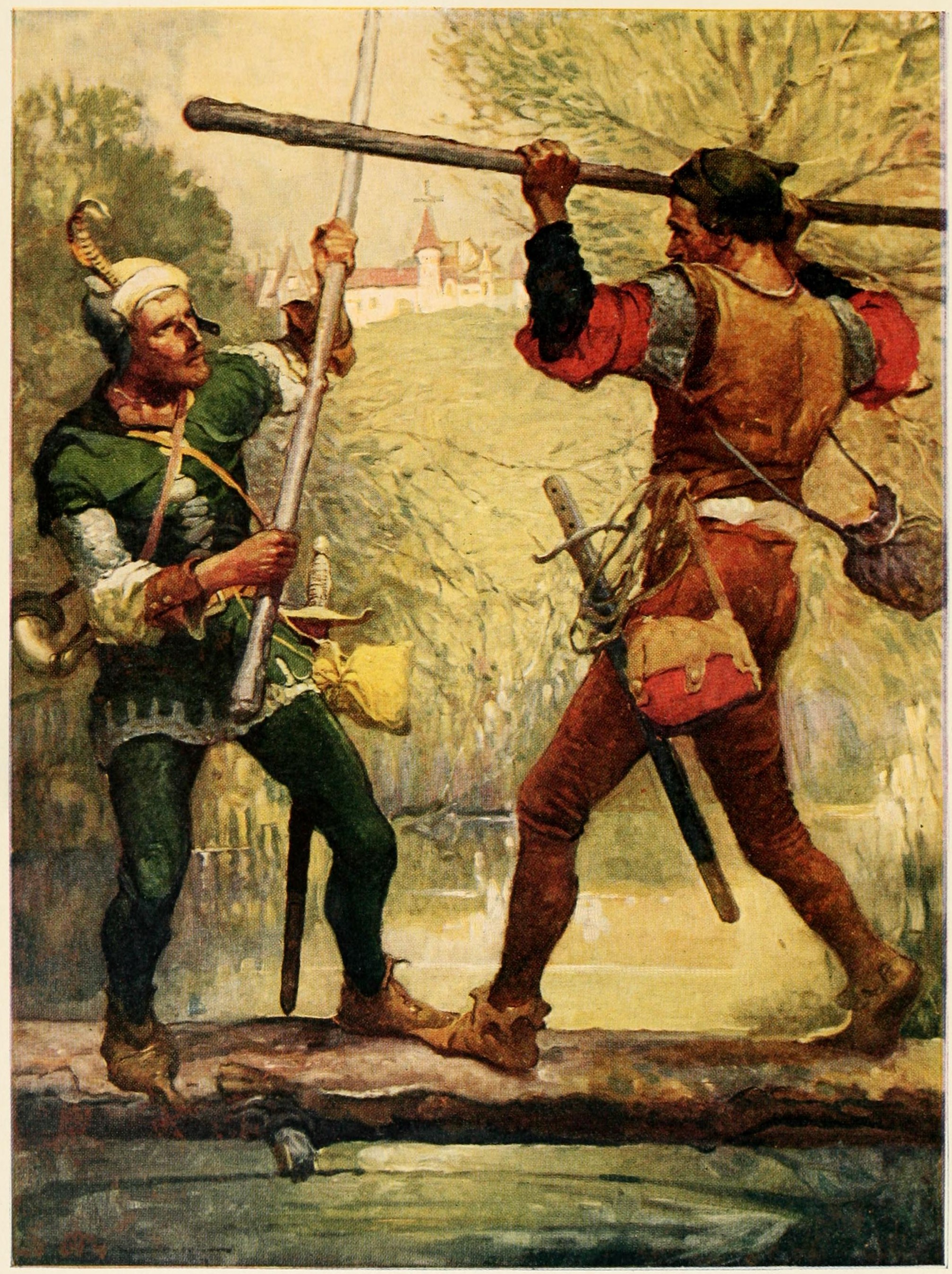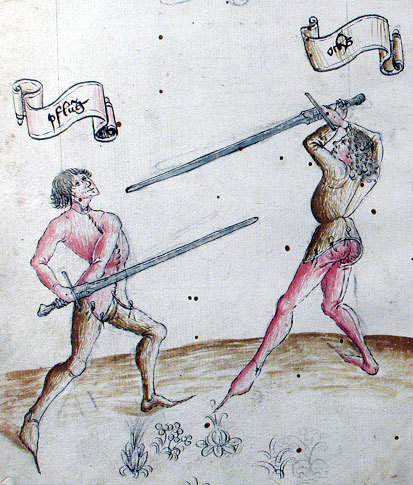|
Pugil Stick
A pugil stick is a heavily padded pole-like training weapon used since the early 1940s by military personnel in training for rifle and bayonet combat."Pugil Stick-Overcoming Hesitation and the Opponent" www.marines.com, Retrieved 31 January 2011 The pugil stick is similar to a quarterstaff or bo (weapon), Japanese ''bo'', and may be marked to indicate which end represents the bayonet and which the rifle butt. Dr. Armond H. Seidler (1919-2017) of the University of New Mexico invented the Pugil Stick training method during World War II. It was initially adopted by the United States Marine Corps, but was later included in United States Army combat training as well. Dr. Seidler received an award from the Marine Corps for his invention. Pugil bo ... [...More Info...] [...Related Items...] OR: [Wikipedia] [Google] [Baidu] |
Concussion Of The Brain
A concussion, also known as a mild traumatic brain injury (mTBI), is a head injury that temporarily affects brain functioning. Symptoms may include loss of consciousness (LOC); memory loss; headaches; difficulty with thinking, concentration, or balance; nausea; blurred vision; sleep disturbances; and mood changes. Any of these symptoms may begin immediately, or appear days after the injury. Concussion should be suspected if a person indirectly or directly hits their head and experiences any of the symptoms of concussion. It is not unusual for symptoms to last 2 weeks in adults and 4 weeks in children. Fewer than 10% of sports-related concussions among children are associated with loss of consciousness. Common causes include motor vehicle collisions, falls, sports injuries, and bicycle accidents. Risk factors include drinking alcohol and a prior history of concussion. The mechanism of injury involves either a direct blow to the head or forces elsewhere on the body that a ... [...More Info...] [...Related Items...] OR: [Wikipedia] [Google] [Baidu] |
Popular Science
''Popular Science'' (also known as ''PopSci'') is an American digital magazine carrying popular science content, which refers to articles for the general reader on science and technology subjects. ''Popular Science'' has won over 58 awards, including the American Society of Magazine Editors awards for its journalistic excellence in 2003 (for General Excellence), 2004 (for Best Magazine Section), and 2019 (for Single-Topic Issue). With roots beginning in 1872, ''Popular Science'' has been translated into over 30 languages and is distributed to at least 45 countries. Early history ''The Popular Science Monthly'', as the publication was originally called, was founded in May 1872 by Edward L. Youmans to disseminate scientific knowledge to the educated layman. Youmans had previously worked as an editor for the weekly ''Appleton's Journal'' and persuaded them to publish his new journal. Early issues were mostly reprints of English periodicals. The journal became an outlet for writings ... [...More Info...] [...Related Items...] OR: [Wikipedia] [Google] [Baidu] |
Quarterstaff
A quarterstaff (plural quarterstaffs or quarterstaves), also short staff or simply staff is a traditional European pole weapon, which was especially prominent in England during the Early Modern period. The term is generally accepted to refer to a shaft of hardwood from long, sometimes with a metal tip, ferrule, or spike at one or both ends. The term "short staff" compares this to the "long staff" based on the pike with a length in excess of . The height of the staff should be around the same as the user plus their hand set upright on their head (approximately ). Etymology The name "quarterstaff" is first attested in the mid-16th century. The "quarter" possibly refers to the means of production, the staff being made from quartersawn hardwood (as opposed to a staff of lower quality made from conventionally sawn lumber or from a tree branch).OED; The possibility that the name derives from the way the staff is held, the right hand grasping it one-quarter of the distance from the ... [...More Info...] [...Related Items...] OR: [Wikipedia] [Google] [Baidu] |
Jūkendō
is the Japanese martial art of bayonet fighting,Stevens, J. (1985): "The Founder, Ueshiba Morihei." In R. Strozzi-Heckler (Ed.): ''Aikido and the new warrior'' (pp. 5–22). Berkeley, CA: North Atlantic. ()Mather, J. (1990): "A Sensei's story: Karate's Takayuki Kubota." ''Black Belt'', 28(6):40–44.Steele, D. E. (1991): "Training to fight Saddam's army: US troops prepared for hand-to-hand combat against Iraqis." ''Black Belt'', 29(5):33–36.Lowry, D. (2009): ''The Karate way: Discovering the spirit of practice'' (p. 76). Boston, MA: Shambhala. () and has been likened to kendo (but with bayonets instead of swords).Clayton, B. D., Horwitz, R., & Pollard, E. (2004): ''Shotokan's secret: The hidden truth behind Karate's fighting origins'' (p. 148). Black Belt Books. () According to Tanaka Fumon, jūkendō techniques are based on Japanese sojutsu (spear fighting)Tanaka, F. (2003): ''Samurai fighting arts: The spirit and the practice'' (p. 222). Tokyo: Kodansha International. () an ... [...More Info...] [...Related Items...] OR: [Wikipedia] [Google] [Baidu] |
Jōdō
, meaning "the way of the ''jō''", or is a Japanese martial art using a short staff called ''jō''. The art is similar to ''bōjutsu'', and is strongly focused upon defense against the Japanese sword. The ''jō'' is a short staff, usually about 3 to 5 feet (0.9 to 1.5 m) long. Legendary origins of Jōjutsu Shintō Musō-ryū jōjutsu (sometimes known as Shintō Musō-ryū jōdō - "Shindō" is also a valid pronunciation for the leading characters), is reputed to have been invented by the great swordsman Musō Gonnosuke Katsuyoshi (夢想 權之助 勝吉, fl. c.1605, date of death unknown) about 400 years ago, after a bout won by the famous Miyamoto Musashi (宮本 武蔵, 1584–1645). According to this tradition, Gonnosuke challenged Musashi using a ''bō'', or long staff, a weapon he was said to wield with great skill. Although other accounts of this first duel disagree, according to the oral tradition of Shintō Musō-ryū, Musashi caught Gonnosuke's ''bō'' in a tw ... [...More Info...] [...Related Items...] OR: [Wikipedia] [Google] [Baidu] |
German School Of Fencing
The German school of fencing (') is a system of combat taught in the Holy Roman Empire during the Late Medieval, German Renaissance, and Early Modern periods. It is described in the contemporary Fechtbücher ("fencing books") written at the time. The geographical center of this tradition was in what is now Southern Germany including Augsburg, Frankfurt, and Nuremberg. During the period in which it was taught, it was known as the ', or the ''"Art of Fighting"''. The German school of fencing focuses primarily on the use of the two-handed longsword; it also describes the use of many other weapons, including polearms, medieval daggers, messers (with or without a buckler), and the staff, as well as describing mounted combat and unarmed grappling (''ringen''). Most authors of writings on the system are, or claim to be, in the tradition of the 14th-century master Johannes Liechtenauer. The earliest surviving treatise on Liechtenauer's system is a manuscript dated to 1389, known a ... [...More Info...] [...Related Items...] OR: [Wikipedia] [Google] [Baidu] |
Bayonet
A bayonet (from French ) is a knife, dagger, sword, or spike-shaped weapon designed to fit on the end of the muzzle of a rifle, musket or similar firearm, allowing it to be used as a spear-like weapon.Brayley, Martin, ''Bayonets: An Illustrated History'', Iola, WI: Krause Publications, , (2004), pp. 9–10, 83–85. From the 17th century to World War I, it was a weapon for infantry attacks. Today it is considered an ancillary weapon or a weapon of last resort. History The term ''bayonette'' itself dates back to the mid-to-late 16th century, but it is not clear whether bayonets at the time were knives that could be fitted to the ends of firearms, or simply a type of knife. For example, Cotgrave's 1611 ''Dictionarie'' describes the bayonet as "a kind of small flat pocket dagger, furnished with knives; or a great knife to hang at the girdle". Likewise, Pierre Borel wrote in 1655 that a kind of long-knife called a ''bayonette'' was made in Bayonne but does not give any ... [...More Info...] [...Related Items...] OR: [Wikipedia] [Google] [Baidu] |
Latin
Latin (, or , ) is a classical language belonging to the Italic branch of the Indo-European languages. Latin was originally a dialect spoken in the lower Tiber area (then known as Latium) around present-day Rome, but through the power of the Roman Republic it became the dominant language in the Italian region and subsequently throughout the Roman Empire. Even after the fall of Western Rome, Latin remained the common language of international communication, science, scholarship and academia in Europe until well into the 18th century, when other regional vernaculars (including its own descendants, the Romance languages) supplanted it in common academic and political usage, and it eventually became a dead language in the modern linguistic definition. Latin is a highly inflected language, with three distinct genders (masculine, feminine, and neuter), six or seven noun cases (nominative, accusative, genitive, dative, ablative, and vocative), five declensions, four verb conjuga ... [...More Info...] [...Related Items...] OR: [Wikipedia] [Google] [Baidu] |
Neologism
A neologism Greek νέο- ''néo''(="new") and λόγος /''lógos'' meaning "speech, utterance"] is a relatively recent or isolated term, word, or phrase that may be in the process of entering common use, but that has not been fully accepted into mainstream language. Neologisms are often driven by changes in culture and technology. In the process of language formation, neologisms are more mature than '' protologisms''. A word whose development stage is between that of the protologism (freshly coined) and neologism (new word) is a ''prelogism''. Popular examples of neologisms can be found in science, fiction (notably science fiction), films and television, branding, literature, jargon, cant, linguistics, the visual arts, and popular culture. Former examples include ''laser'' (1960) from Light Amplification by Stimulated Emission of Radiation; ''robot'' (1941) from Czech writer Karel Čapek's play ''R.U.R. (Rossum's Universal Robots)''; and ''agitprop'' (1930) (a portmanteau of " ... [...More Info...] [...Related Items...] OR: [Wikipedia] [Google] [Baidu] |
Jousting
Jousting is a martial game or hastilude between two horse riders wielding lances with blunted tips, often as part of a tournament (medieval), tournament. The primary aim was to replicate a clash of heavy cavalry, with each participant trying to strike the opponent while riding towards him at high speed, breaking the lance on the opponent's shield or jousting armour if possible, or unhorsing him. The joust became an iconic characteristic of the knight (stock character), knight in Romantic medievalism. The participants experience close to three and a quarter times their body weight in G-forces when the lances collide with their armour. The term is derived from Old French , ultimately from Latin "to approach, to meet". The word was loaned into Middle English around 1300, when jousting was a very popular sport among the Anglo-Normans, Anglo-Norman knighthood. The synonym tilt (as in tilting at windmills) dates . Jousting is based on the military use of the lance by heavy cavalry. ... [...More Info...] [...Related Items...] OR: [Wikipedia] [Google] [Baidu] |
American Gladiators (1989 TV Series)
''American Gladiators'' is an American competition television program that aired weekly in syndication from September 1989 to May 1996. The series matched a cast of amateur athletes against each other, as well as against the show's own "gladiators", in contests of strength and agility. The concept was originally created in 1982 by Johnny C. Ferraro and Dan Carr. Carr gathered the Gladiators and hosted the show, and Ferraro financed and produced the original competition at Erie Tech High School in Erie, Pennsylvania so Ferraro could have the event on film as to shop the new creation. In 1983 Ferraro financed, developed and packaged the American Gladiators as a movie project. In 1984 Carr sold his interest in a literary purchase to Flor-Jon Films. Ferraro had been the main driving force behind the American Gladiators brand since 1982. In 1987, Flor-Jon Films then licensed the unscripted rights to The Samuel Goldwyn Company (now part of MGM). Ferraro is the sole creator of the 1994 ... [...More Info...] [...Related Items...] OR: [Wikipedia] [Google] [Baidu] |




